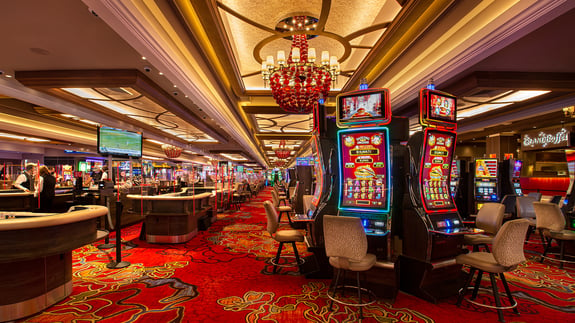
Casino games have long captivated human interest, drawing players into a universe filled with chance, strategy, and the allure of thrill. Each game is painstakingly crafted not just for enjoyment, but also to evoke particular emotional responses that keep gamblers involved and invested. Understanding the reasons behind these designs reveals much about how psychology plays a vital role in the gaming experience.
From the bright lights and dynamic sounds to the sophisticated layering of rules and payoffs, casino games are designed to create an atmosphere of thrill and anticipation. Game designers leverage behavioral strategies to influence participant behavior, whether through the use of winning opportunities, close-call situations, or community engagement. jun 88 By examining these elements, we can better appreciate how casino games fulfill not just a need for entertainment, but underlying psychological needs for thrill and risk. https://jun88.wien/
Comprehending Player Behavior
Casino games are crafted with a profound grasp of player psychology, which is essential for attracting and keeping players. The excitement of the game, coupled with the anticipation of winning, establishes a powerful draw. Game designers utilize elements like sonic elements, dynamic graphics, and engaging gameplay to capture attention and generate emotional responses. These sensory effects enhance the total environment, making players feel more involved in the game.
Another significant aspect of player behavior is the concept of risk versus reward. Casino games often manage high-stakes situations with the potential for substantial rewards, which can cause the occurrence known as near-miss experience. When players come near to winning, the brain secretes dopamine, bolstering their behavior and motivating them to keep playing in search of that elusive win. This cycle of hope and frustration plays a key role in how games are designed and advertised.
Lastly, social factors also play a critical role in player behavior at casinos. Many games are designed to be played in teams or in company with other players, nurturing a sense of togetherness and shared experience. The interaction inherent in games like poker enhances enjoyment and can result in longer play sessions. Designers capitalize on this by designing environments that invite players to stay, socialize, and revisit, making the overall casino experience more inviting.
The Role of Imagery and Audio
Visuals and sound play a vital role in enhancing the player’s experience within gambling games. Designers utilize bold colors, eye-catching graphics, and captivating animations to attract gambler’s attention and maintain their focus. The use of themes, such as adventure or luxury, helps create an engaging atmosphere that transports players into a different world. By appealing to the senses, these elements contribute to a intensified emotional response, encouraging players to interact more deeply with the games.
Audio design is equally important in enhancing the overall experience of casino games. The combination of ambient music, sound effects for winning combinations, and environmental noises creates an sound landscape that holds players enthralled. Sounds associated with wins, such as ringing bells or celebratory music, evoke feelings of excitement and reward, encouraging players to continue playing. These sound cues are strategically placed to amplify the thrill of the game and create a more engaging experience.
Additionally, the synchronization of visuals and audio is essential for supporting the game’s overall concept and mood. Each element should align seamlessly to create a unified experience that pulls players in. The effective use of this integration not only improves user satisfaction but also increases the likelihood of return play, as players become more invested in the captivating world that the casino games offer. This thoughtful integration of visuals and sound ultimately enhances player involvement and commitment.
Reward Systems and Engagement
The design of casino games greatly relies on reward structures to keep participants engaged and coming back for additional experiences. These systems are rooted in psychological principles that exploit human behavior and desire. Participants are often driven by the excitement of success, which is supported by immediate feedback through the game’s design. This instant gratification not only improves the gaming experience but also cultivates a sense of achievement, prompting participants to continue playing in hopes of bigger gains.
Casinos implement various incentive systems, such as jackpots, extra rewards, and multipliers, to engage players. These features create a layer of thrill that sustains interest. Additionally, the unpredictability of outcomes plays a significant role in keeping attention. The variable reward system, where wins are random but occur often enough, keeps participants on edge and driven to keep playing. This loop of hope and anticipation is essential to the success of casino games.
Furthermore, community aspects, such as tournaments and multiplayer features, enhance the engagement factor by leveraging the competitive nature of players. The shared experience of playing with others can intensify the excitement of winning and create a community atmosphere within the casino. By integrating these social dynamics with efficient reward systems, casino games don’t just provide fun but also foster a deeper bond among players, reinforcing their loyalty to the overall experience.